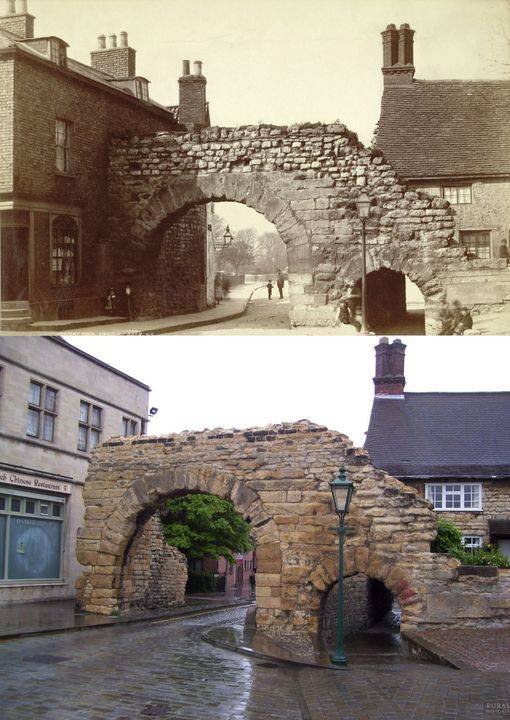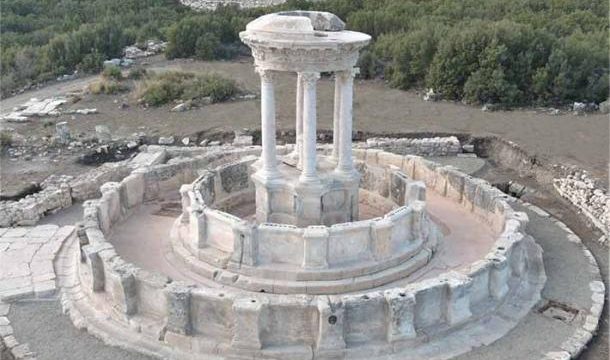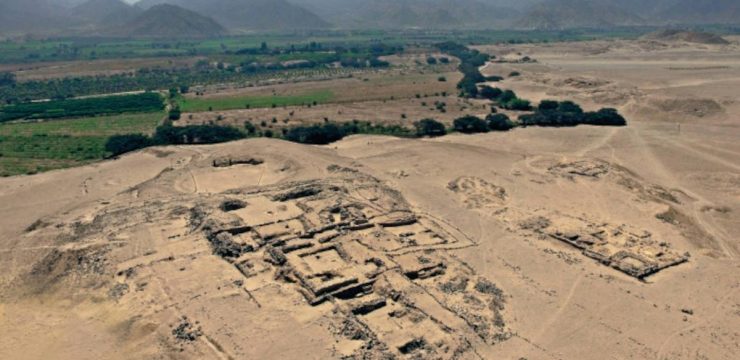Newport Arch, a remarkable relic of Britain’s ancient past, stands as an enduring testament to Roman engineering and historical preservation. Situated in Lincoln, this awe-inspiring structure has survived nearly two millennia, making it the oldest Roman archway in the United Kingdom still in active use by daily traffic. More than a mere remnant of antiquity, Newport Arch remains a functional and integral part of Lincoln’s urban landscape, bridging the ancient and the modern in a way few other monuments can.

The Roman Origins: Gateway to Lindum Colonia
Constructed in the 3rd century AD, Newport Arch originally served as the northern gateway to Lindum Colonia, a prominent Roman settlement that would evolve into present-day Lincoln. This city played a crucial role in Roman Britain, acting as a key administrative and military hub. The arch was built as part of Ermine Street, one of the most significant Roman roads, which linked London to York and facilitated trade, military movements, and communication across the empire. The sheer strategic importance of Lindum Colonia meant that its gates were designed not only for function but also as lasting symbols of Rome’s influence and authority in Britain. Newport Arch was more than just an entrance—it was a powerful statement of Rome’s strength, order, and architectural superiority.
Engineering Excellence: A Testament to Roman Ingenuity
The Romans were master builders, and Newport Arch is a prime example of their unparalleled engineering expertise. Constructed using meticulously selected local limestone and bricks, the arch was designed with remarkable precision, ensuring both its structural integrity and its aesthetic appeal. Unlike many ancient structures that have deteriorated significantly over time, Newport Arch has required only minimal structural interventions across its 1,800-year existence. The longevity of the arch speaks volumes about the advanced construction techniques employed by Roman architects and engineers, who carefully calculated weight distribution and material durability to create structures built to endure the ages.
Despite the passing centuries and the advent of modern construction methods, Newport Arch continues to function remarkably well. Even with the increased weight and frequency of modern vehicles, the arch remains steadfast, a silent yet powerful testament to Rome’s unparalleled architectural legacy. The continued use of this archway demonstrates not only its resilience but also the foresight of its builders, who designed it to withstand the elements and evolving urban demands.
Evolution Through Time: Medieval and Later Adaptations
While the foundation and primary structure of Newport Arch remain distinctly Roman, the passage of time has brought modifications. During the medieval period, builders made careful additions to reinforce the arch’s northern façade. These alterations, rather than compromising the authenticity of the structure, highlight an early awareness of architectural conservation. The medieval modifications reflect the necessity of preserving historical integrity while adapting ancient structures to meet contemporary needs.
Newport Arch’s role extended beyond a simple gateway; it was once part of a larger defensive system protecting Lindum Colonia. Remnants of this fortification can still be seen today. Adjacent to the arch, Newport Cottage stands as a reminder of the area’s layered history. A segment of the original Roman wall remains visible, offering visitors a rare opportunity to see firsthand the military defenses that once safeguarded the city. This seamless blending of Roman and medieval architectural elements provides invaluable insight into the continuity of Lincoln’s history, where each generation has contributed to the preservation and adaptation of its most significant landmarks.
A Living Monument: Bridging Centuries of History
Unlike many ancient ruins that exist solely as tourist attractions, Newport Arch remains a fully integrated part of Lincoln’s cityscape. Its continued use for vehicle and pedestrian traffic exemplifies the incredible durability of Roman engineering and the city’s dedication to preserving its historic character. Walking beneath its weathered stones, one can almost hear the echoes of Roman soldiers, medieval travelers, and modern-day residents who have all passed through its enduring gateway.
The cultural significance of Newport Arch extends far beyond its structural resilience. It serves as Lincoln’s most iconic Roman landmark, representing the city’s deep historical roots. The arch is not merely a relic of a bygone era; it is an active participant in Lincoln’s identity. It reminds residents and visitors alike of the city’s evolution from a Roman colony to a vibrant modern community. The presence of such a structure in everyday life fosters a profound connection between the past and the present, making history a tangible and accessible experience.
Preserving the Legacy: The Future of Newport Arch
As one of Britain’s most well-preserved Roman structures, Newport Arch stands as a powerful example of the importance of historical preservation. It teaches invaluable lessons about sustainable architecture, demonstrating that quality craftsmanship, when maintained and respected, can withstand the passage of time. Conservation efforts ensure that the arch remains not only a functional element of Lincoln’s infrastructure but also a cherished historical monument.
In an era when many ancient structures face neglect or destruction due to urban expansion, Newport Arch proves that it is possible to integrate historical landmarks into modern environments without sacrificing their authenticity. Ongoing preservation initiatives aim to safeguard the arch for future generations, ensuring that it continues to serve as both a practical thoroughfare and an enduring tribute to Britain’s Roman heritage.
The Enduring Influence of Roman Britain
Newport Arch is more than just a gateway—it is a bridge across time, linking contemporary society with the achievements of the Roman Empire. It connects us to an age when architecture was both an art and a science, when cities were designed with long-term resilience in mind, and when structures were built to last not just decades, but millennia.
For historians, archaeologists, and everyday observers alike, Newport Arch is an irreplaceable piece of Britain’s cultural landscape. It reminds us that the past is never truly gone; it lives on in the structures we preserve, in the knowledge we pass down, and in the ways we continue to engage with history. As vehicles pass through its ancient gateway each day, they do more than navigate a city street—they traverse centuries of history, following in the footsteps of Romans, medieval merchants, and countless generations who have come before.
Newport Arch is not simply a monument to be admired from afar—it is a living, breathing connection to Britain’s past. Its sturdy stones, worn smooth by time and countless travelers, whisper stories of empires, battles, and civilizations that once flourished. It is a symbol of resilience, a tribute to human ingenuity, and a reminder that with careful stewardship, history can continue to shape our present and future.
Even as Lincoln evolves, Newport Arch stands firm—a proud sentinel of the past, steadfast in its purpose, and unwavering in its legacy. It is a landmark that does not merely recount history; it actively participates in it, standing as a bridge between antiquity and the modern age. In Newport Arch, the grandeur of Roman Britain remains alive, ensuring that its lessons, triumphs, and enduring craftsmanship continue to inspire for generations to come.





